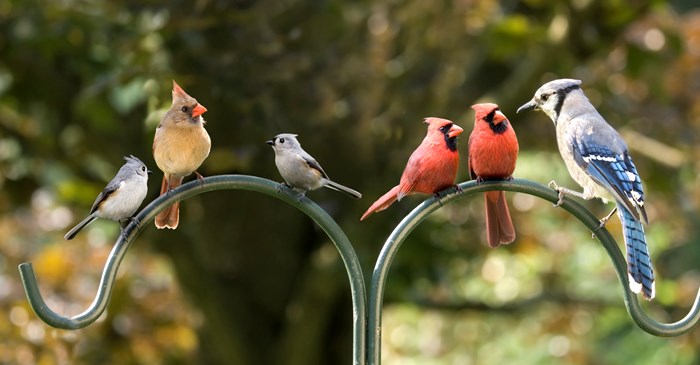Keeping watch over your backyard bird feeder will open your eyes on the number of bird species living in your neighborhood. As you observe the different birds coming and going, each with their different colors, sounds and behaviors, it may leave you wondering how they coexist, especially when you consider the territorial nature of birds.
The short answer: It depends. One thing to consider is which resources are at stake and whether the birds are interested in the same resources. For example, if you attach two nesting boxes on the same post, different bird species like tree swallows and blue birds can actually be peaceful neighbors, raising their broods next to one another. Keep in mind, however, that you'll still see them sparring with same-species invaders!
While some bird species ignore each other in perfect harmony, others work together. For example, as the woodpecker removes bark from a tree in search of grubs, a chickadee may fly by and grab the insects that were stirred up in the bark-removal process. In addition to that, woodpeckers also respond to the chickadee’s alarm call if it spies a predator. In the winter, chickadees and woodpeckers, along with titmice and White-breasted Nuthatches will join together in a flock to forage for food.
Not all birds do it, but flocking together brings them several advantages. Their numbers are much more likely to be distracting and confusing to predators. So there is an element of safety to foraging in a group. And as we learned in the above paragraph, they sometimes end up uncovering a source of food for the other.
To draw a wide variety of species to your feeder, try Lyric Supreme Wild Bird Mix, which has plenty of high quality ingredients that many birds love, such as sunflower kernels, pistachios, pecans, Nyjer seed, shelled peanuts, a variety of sunflower seeds and more!
